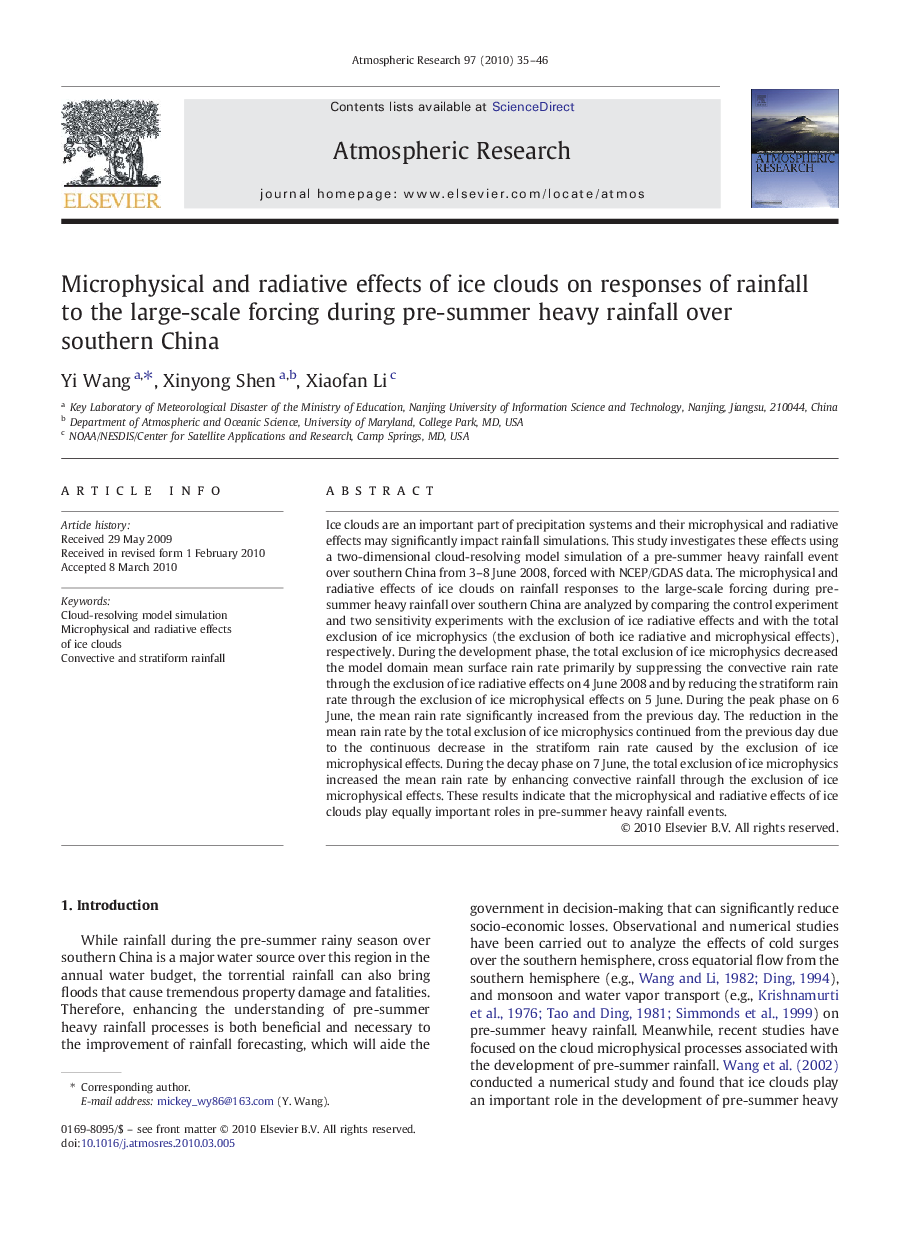| Article ID | Journal | Published Year | Pages | File Type |
|---|---|---|---|---|
| 4450526 | Atmospheric Research | 2010 | 12 Pages |
Ice clouds are an important part of precipitation systems and their microphysical and radiative effects may significantly impact rainfall simulations. This study investigates these effects using a two-dimensional cloud-resolving model simulation of a pre-summer heavy rainfall event over southern China from 3–8 June 2008, forced with NCEP/GDAS data. The microphysical and radiative effects of ice clouds on rainfall responses to the large-scale forcing during pre-summer heavy rainfall over southern China are analyzed by comparing the control experiment and two sensitivity experiments with the exclusion of ice radiative effects and with the total exclusion of ice microphysics (the exclusion of both ice radiative and microphysical effects), respectively. During the development phase, the total exclusion of ice microphysics decreased the model domain mean surface rain rate primarily by suppressing the convective rain rate through the exclusion of ice radiative effects on 4 June 2008 and by reducing the stratiform rain rate through the exclusion of ice microphysical effects on 5 June. During the peak phase on 6 June, the mean rain rate significantly increased from the previous day. The reduction in the mean rain rate by the total exclusion of ice microphysics continued from the previous day due to the continuous decrease in the stratiform rain rate caused by the exclusion of ice microphysical effects. During the decay phase on 7 June, the total exclusion of ice microphysics increased the mean rain rate by enhancing convective rainfall through the exclusion of ice microphysical effects. These results indicate that the microphysical and radiative effects of ice clouds play equally important roles in pre-summer heavy rainfall events.
